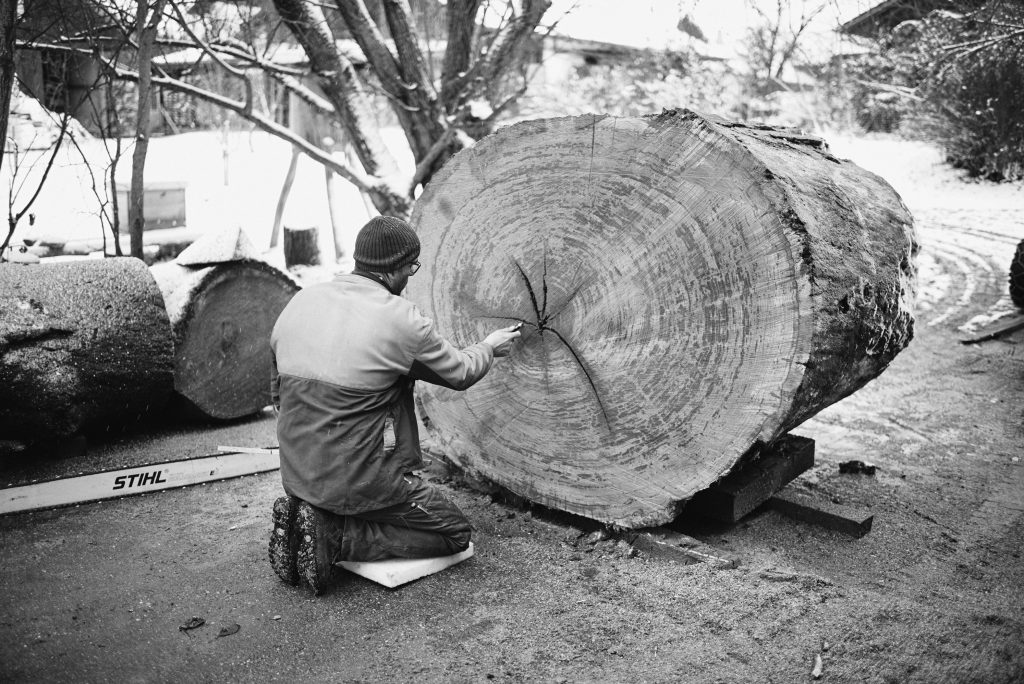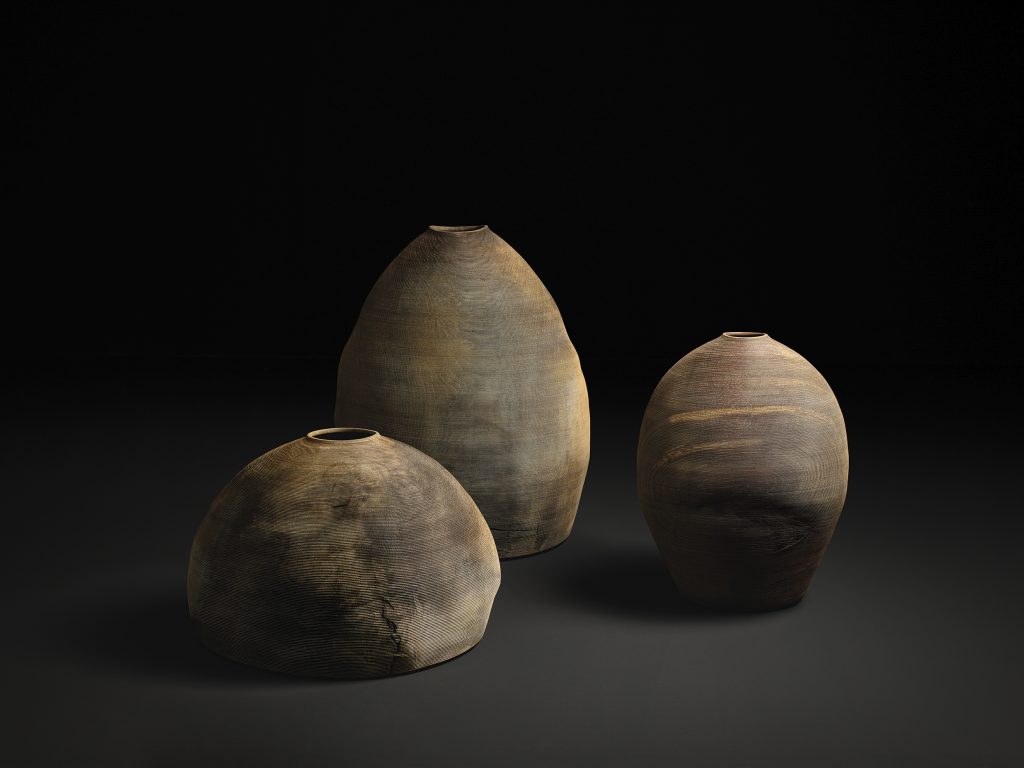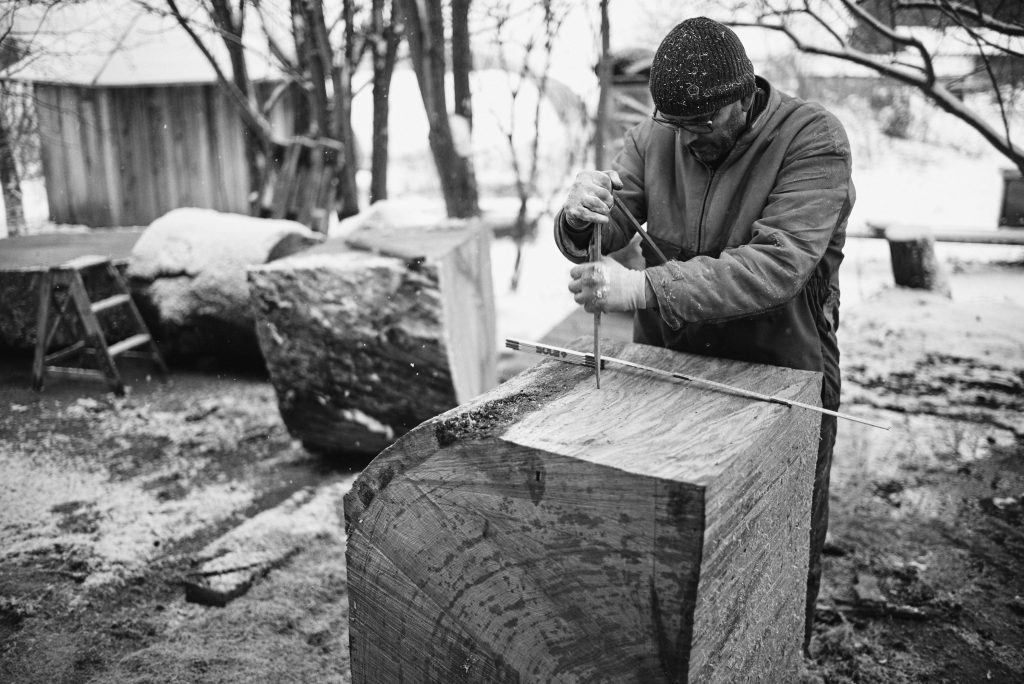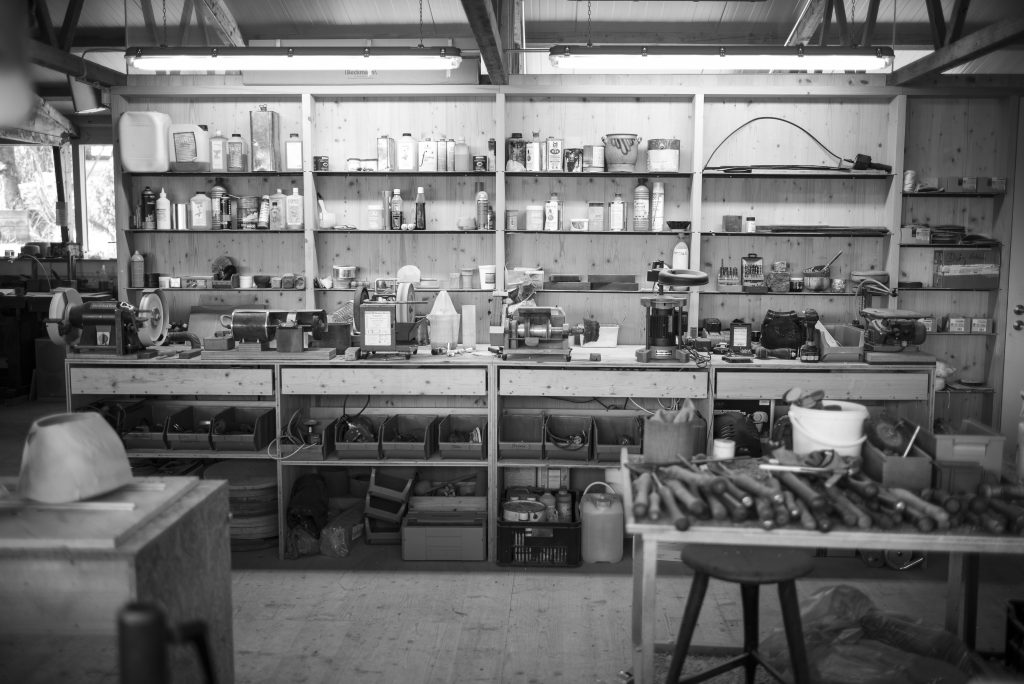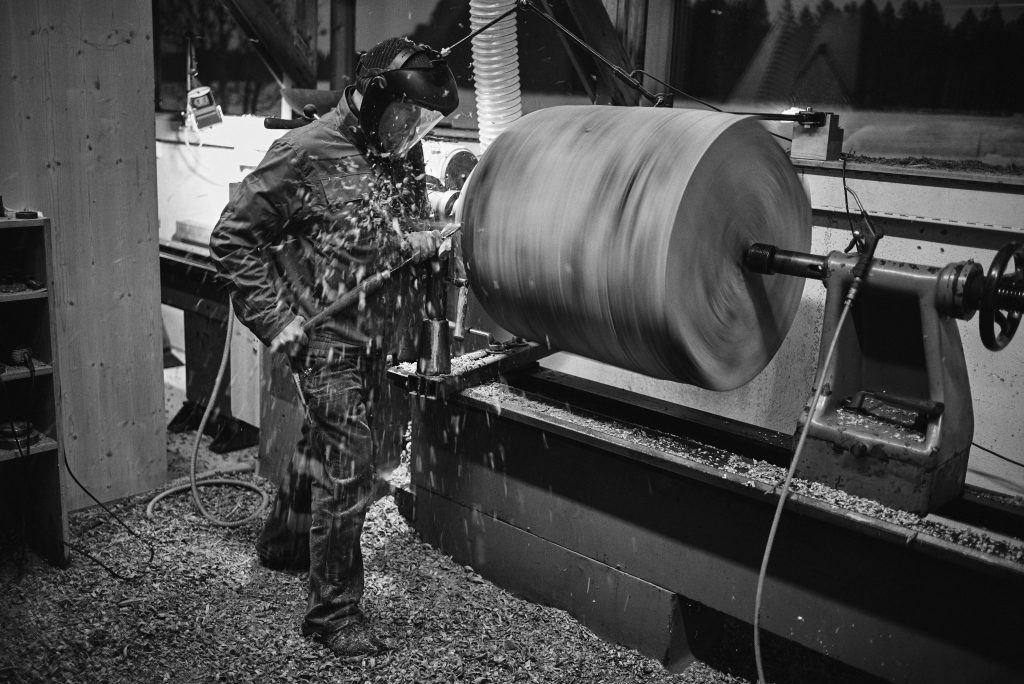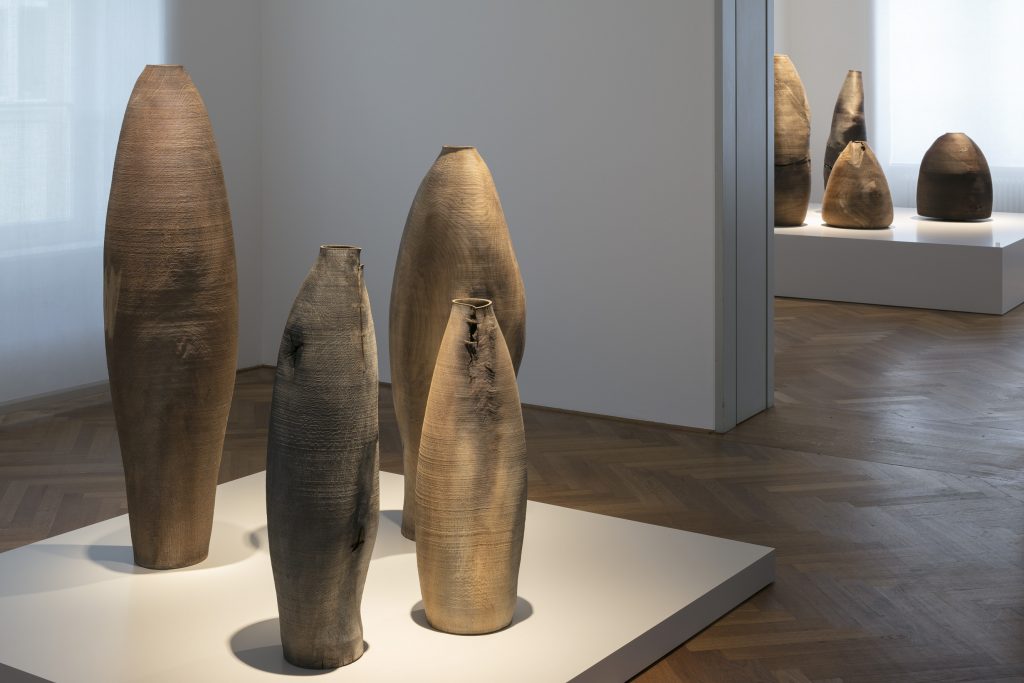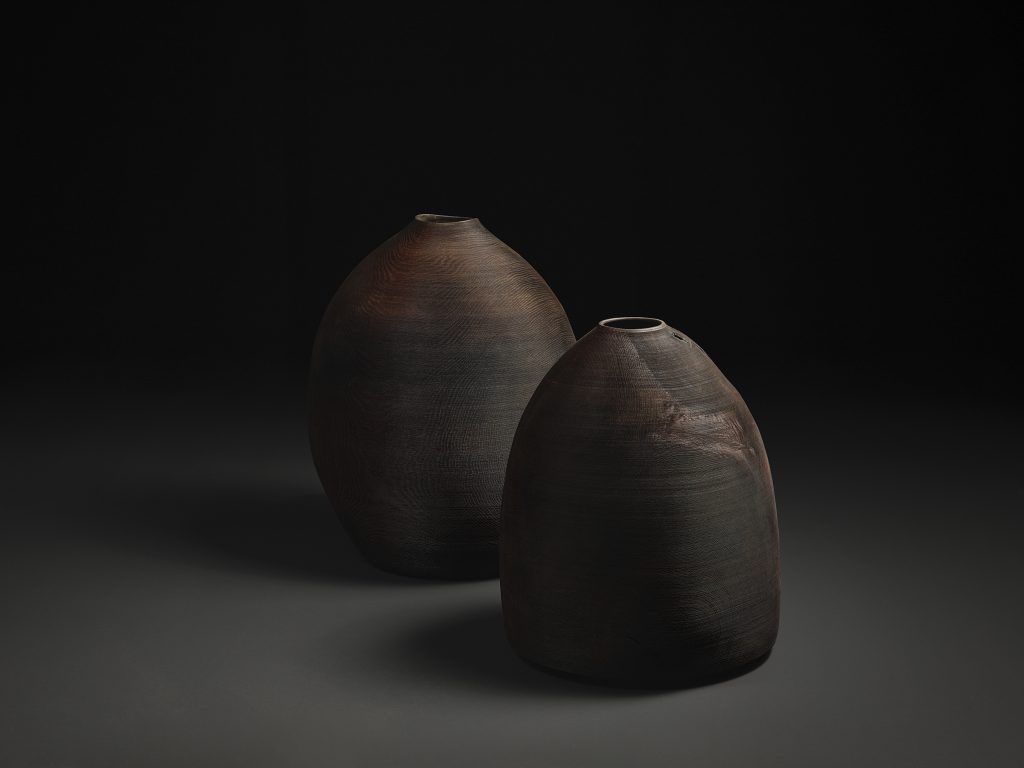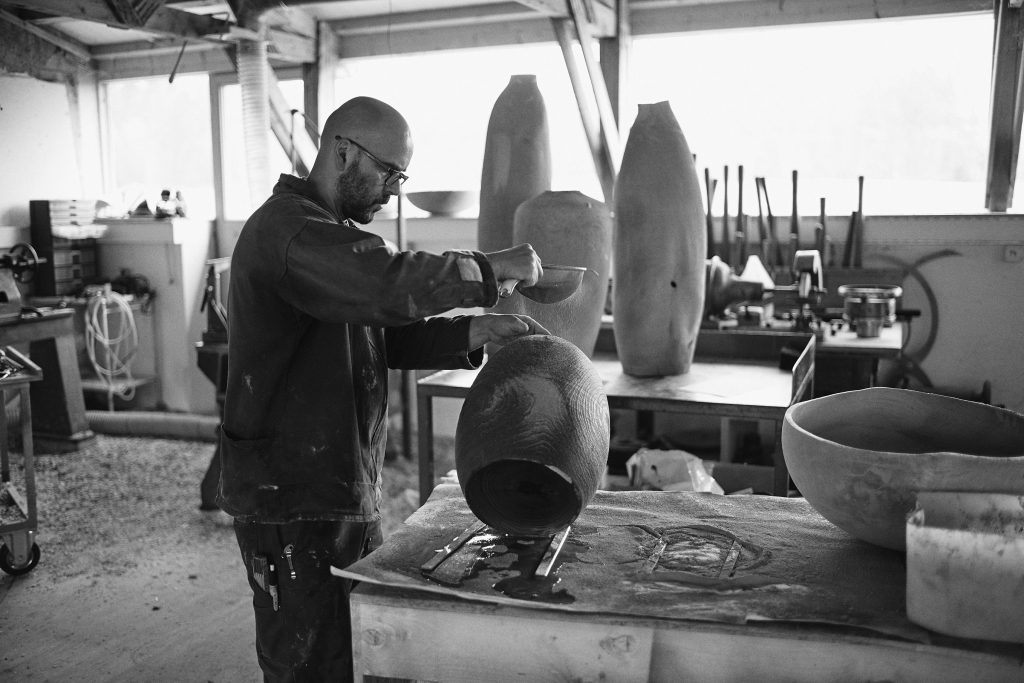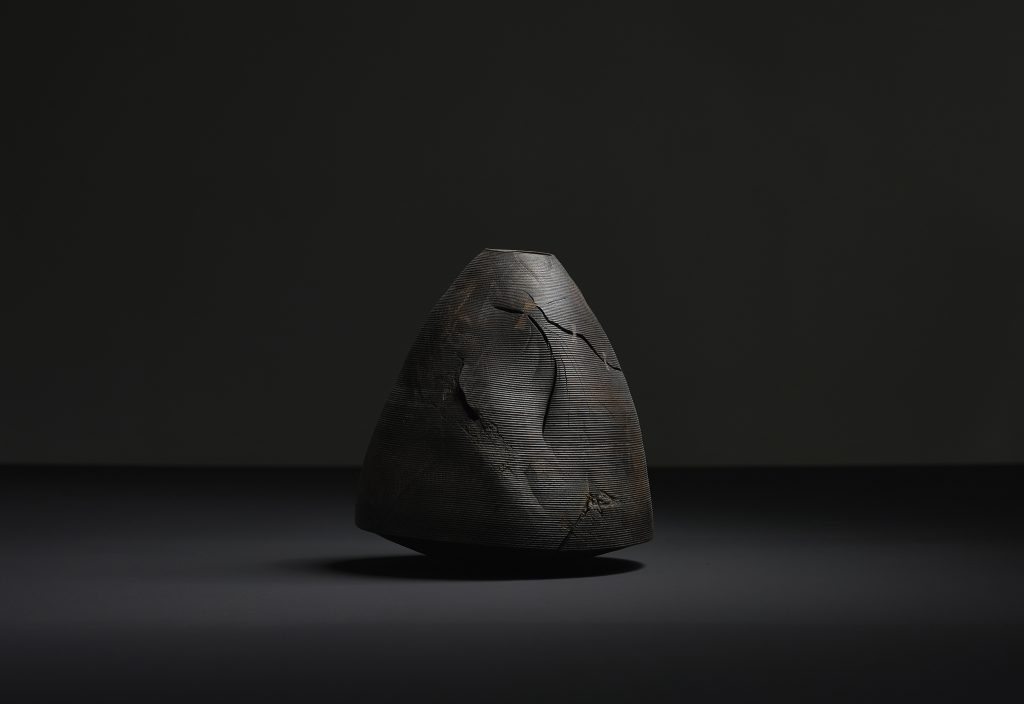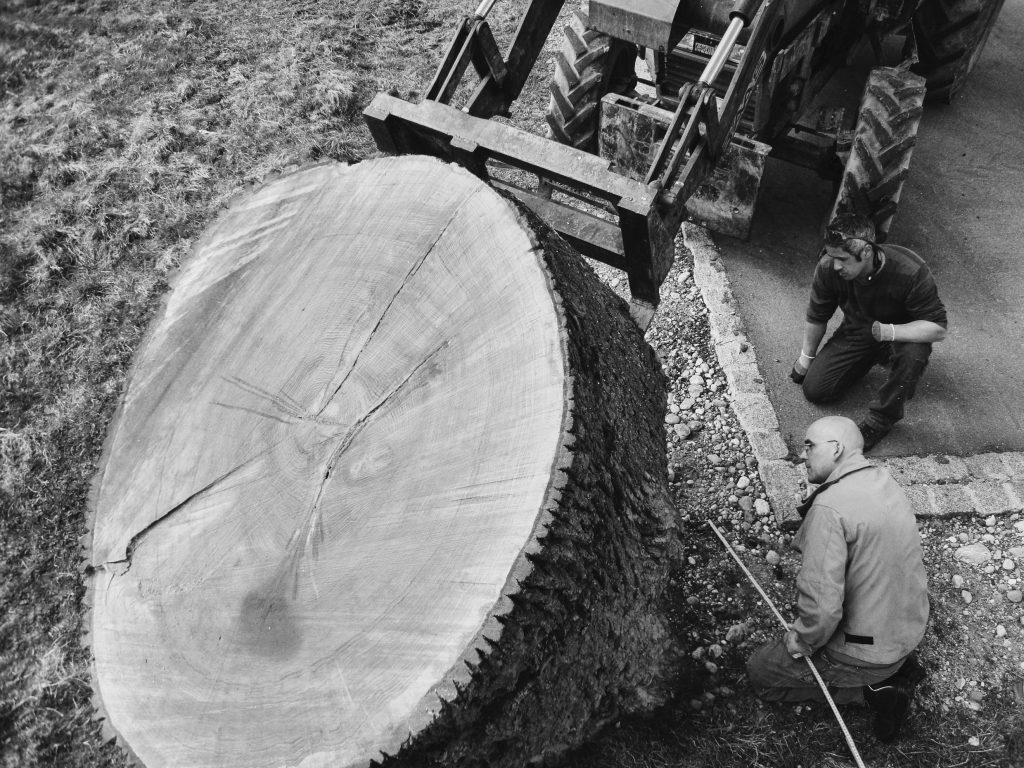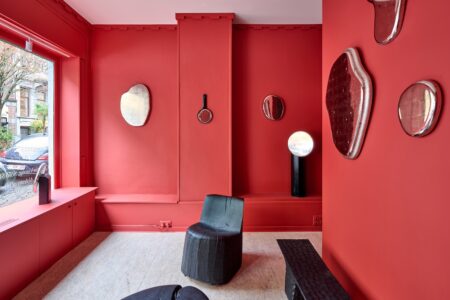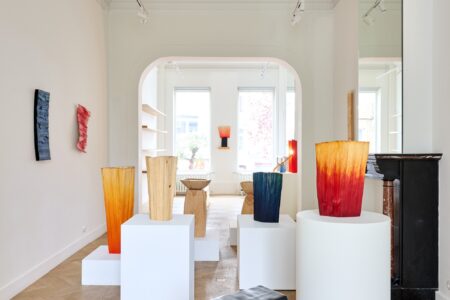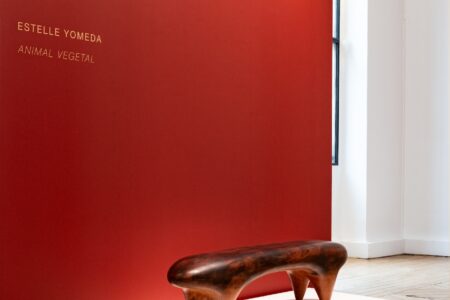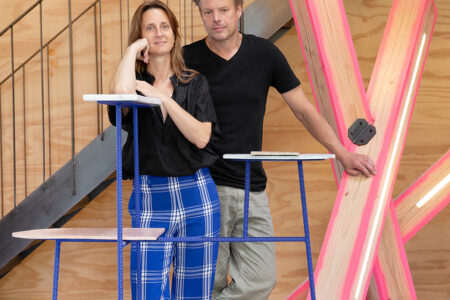
Ernst Gamperl on ‘Tree of Life’
Since winning the LOEWE Craft Prize in 2017, Ernst Gamperl has been pursuing more essential & archaic formats. ‘Tree of Life’ is his once-in-a-lifetime project, as he transforms a huge 230-year-old oak tree into 67 wrought vessels that embody his excellence in woodturning and experimental patinas.
TLmag: Trained as a furniture maker, you have been reaching a high level of excellence in turnery. Could you tell us more about your personal connection to wood and your research on patina?
Ernst Gamperl (E.G.): Wood is a living material. For me it is one of the most versatile, elegant and beautiful natural materials, and it is enormously diverse – every timber requires a different treatment. Most timber smells very good even while working with it. I also keep an eye out for trees that have succumbed to the wind and weather or have had to be felled for other reasons. Trees are of existential importance to us. They store water, transform CO2 into oxygen, supply us with fruit, offer shade from the sun – to me, they have a very special power and energy.
I experimented with very simple and exclusively natural substances such as loam soil, mineral stone dusts and iron oxide, but also milk of lime, which I frequently work with. I can influence the surface colouring with a very wide range of mixtures. I am constantly checking which techniques and materials were used in the past. For instance, a few years ago, in the material archives of the Gewerbemuseum in Winterthur, I discovered tunnel supports that had been soaked in copper sulphate. In the workshop, I conducted experiments, applying mineral powder and loam soils to the wet objects. Again, the reactions with the tannin created a wide variety of shades. This is an important part of my surface compositions.
TLmag: You won the Loewe Craft Prize in 2017. How has it impacted on your recognition as an artist?
E.G.: The first LOEWE show was touring in Madrid, New York and Tokyo. It gave a huge boost to my work in every sense and also to my Tree of Life Project. And winning certainly didn’t hurt. The LOEWE Craft Prize is an international award celebrating and supporting contemporary craftsmanship. I think that it is the perfect platform from which crafts will gain the recognition it deserves.
TLmag: Your connections to Japan are strong thanks to Issey Miyake who has discovered your work at a very early stage. Korea has also been key in your development. If wood has been your medium to express yourself around the world, how does it affect your continuous dialogue between the East and West philosophies, in your quest for beauty and Japanese “emptiness”. Can you explain how have you reached this level?
E.G.: My entire work is influenced by my own love of nature. Bavaria, in Germany, where I was born, is a with strong connection to wood and nature. Probably this is why there is such a strong response to them in Asian culture. Korean aesthetics celebrates an intuitive approach rather than one guided by concepts and superficial designs. I’m talking about traditionally crafted objects, mainly made from low-fired clay, wood or leather, which acquire an increasingly beautiful structure through constant use. It is the soul of the material. For the Japanese, it is the love of nature which is intrinsic to Buddhism, and particularly to Shintoism. They worship the divine in nature and this is what makes my wooden pieces so special to them. To me, there are strong parallels with pre-Christian Germanic culture, the worship of pagan gods and holy trees. That fits in well with the Asian cultural and religious contexts, which are also informed by the culture of emptiness. And that brings us right back to the vessel – U-tsu-wa – vessel, emptiness, universe. All these cultures are united by a love of beautiful objects. I try to make this visible and intuitively tangible, using very simple means – with just a lathe and a piece of fresh wood.
TLmag: Can you explain how have you evolved in this artistic and conceptual directions?
E.G.: I was getting very critical with myself over the years, both with understanding the trees and what the material was teaching me. I never lost sight of the material, the piece of wood, during any step in the process. I let the material guide me and I read it with every move – from an early stage like the pre-cutting by chainsaw or the first cut at the lathe. It is as though my hands were one with the wood. It is an ongoing dialogue over the years which continues throughout the creative process, from the initial cutting stage at the tree right up to the finished, fully formed object.
TLmag: Tree of Life is your ultimate art project which goes far beyond your everyday craftsman’s approach. What is the message you want to convey? What would be the next step? Would you like to share your work with a larger audience beyond the collectors or institutions?
E.G.: My idea has been to bring life back to this tree and to get the natural beauty and the healing aspect of art closer to the people. Tree of Life will be touring internationally and will be one of my main ventures in the upcoming years.
